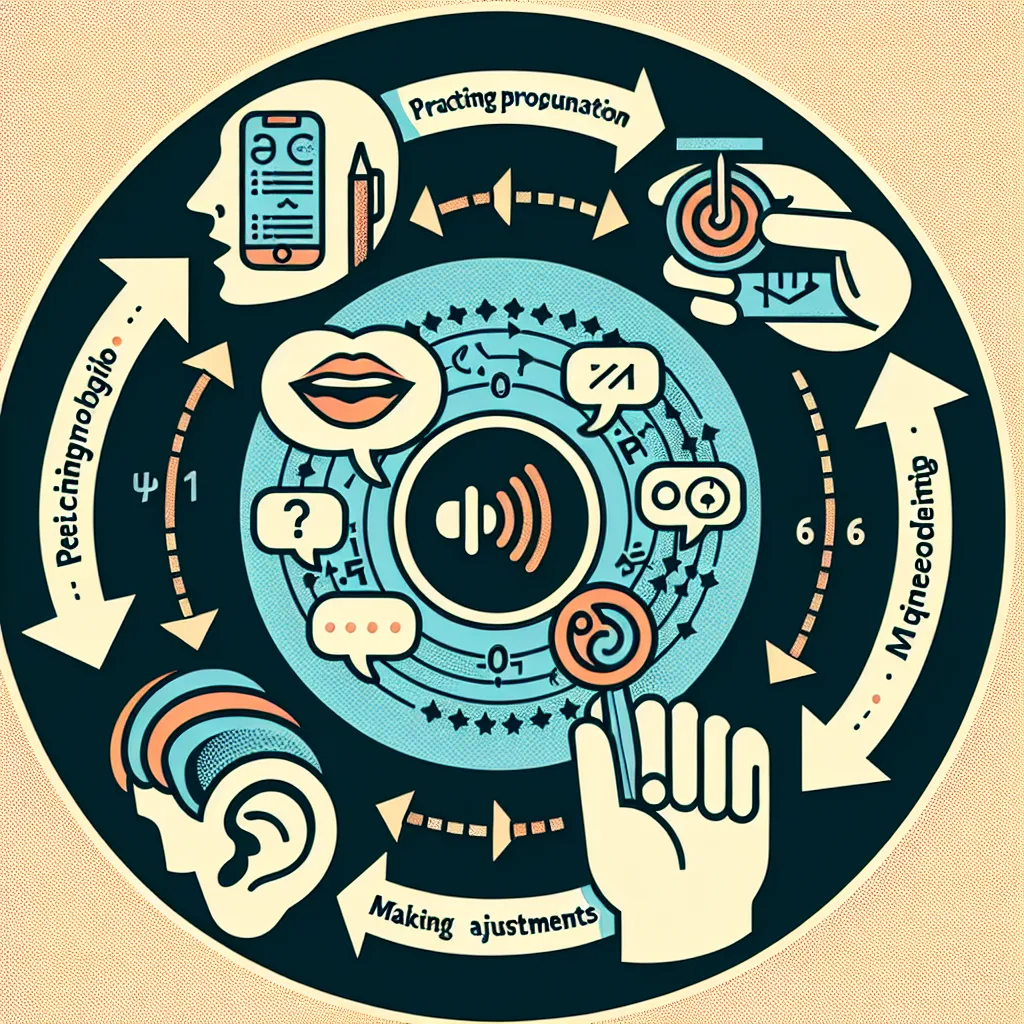Are you struggling with pronouncing common English phrases correctly? Don’t worry; you’re not alone. Many English learners find pronunciation challenging, but with the right techniques and practice, you can significantly improve your skills. In this comprehensive guide, we’ll explore effective methods to help you master the pronunciation of common English phrases.
Understanding the Importance of Proper Pronunciation
Before diving into specific techniques, it’s crucial to understand why proper pronunciation matters. Clear pronunciation enhances your overall communication skills, helps you be better understood, and boosts your confidence when speaking English. It’s not about sounding like a native speaker, but rather about being clear and comprehensible.
 Importance of English Pronunciation
Importance of English Pronunciation
Key Concepts in English Pronunciation
Phonemes and Sound Production
English has 44 distinct sounds, or phonemes. Understanding how these sounds are produced is the first step in improving your pronunciation. For example, the difference between the “th” sound in “think” and “this” lies in whether your vocal cords vibrate or not.
Stress and Intonation
English is a stress-timed language, meaning certain syllables in words and certain words in sentences are emphasized. Intonation, the rise and fall of your voice, also plays a crucial role in conveying meaning.
Effective Methods for Improving Pronunciation
1. Listen and Repeat
One of the most effective ways to improve your pronunciation is through active listening and repetition. Use resources like podcasts, audiobooks, or YouTube videos to expose yourself to native English speakers.
- Start with short phrases and gradually move to longer sentences.
- Pay attention to the stress and intonation patterns.
- Record yourself and compare your pronunciation to the original.
2. Use Phonetic Transcriptions
The International Phonetic Alphabet (IPA) is a valuable tool for learning correct pronunciation. Many dictionaries provide phonetic transcriptions for words.
For example, the word “pronunciation” is transcribed as /prəˌnʌnsiˈeɪʃən/.
3. Practice Minimal Pairs
Minimal pairs are words that differ by only one sound. Practicing these can help you distinguish and produce similar sounds accurately.
Examples:
- “Ship” vs. “Sheep”
- “Think” vs. “Sink”
- “Leave” vs. “Live”
4. Use Pronunciation Apps and Tools
There are numerous apps and online tools designed specifically for pronunciation practice. Some popular options include:
- Duolingo
- ELSA Speak
- Google Translate (with pronunciation feature)
These tools often use speech recognition technology to provide instant feedback on your pronunciation.
Common Pronunciation Mistakes and How to Avoid Them
1. Th-sound Confusion
Many learners struggle with the “th” sound, often replacing it with “s,” “t,” or “f” sounds.
Practice: Place your tongue between your teeth and blow air out to produce the correct “th” sound in words like “think,” “thank,” and “three.”
2. Silent Letters
English has many words with silent letters, which can be tricky for non-native speakers.
Examples:
- The “k” in “knife”
- The “b” in “comb”
- The “gh” in “right”
Practice: Create a list of common words with silent letters and practice them regularly.
3. Word Stress Errors
Incorrect word stress can significantly affect comprehension.
Example: In the word “photograph,” the stress is on the first syllable (PHO-to-graph), but in “photographer,” it shifts to the second syllable (pho-TO-gra-pher).
Practice: Use a dictionary to check the correct stress pattern for unfamiliar words.
The Phonemic Chart and Commonly Mispronounced Words
The English Phonemic Chart is a visual representation of all the sounds in the English language. Familiarizing yourself with this chart can greatly enhance your pronunciation skills.
Here are 10 commonly mispronounced English words related to everyday phrases:
- “Comfortable” – often mispronounced as “comf-ter-bull” instead of “KUMF-tuh-bull”
- “Clothes” – often pronounced as “close” instead of “klohz”
- “Almond” – the “l” is often pronounced, but it should be silent: “AH-mund”
- “Wednesday” – often mispronounced as “Wed-nes-day” instead of “WENZ-day”
- “Recipe” – often mispronounced as “re-cipe” instead of “RE-suh-pee”
- “Pronunciation” – ironically often mispronounced as “pro-noun-ciation” instead of “pruh-NUN-see-ay-shun”
- “Espresso” – often mispronounced as “ex-presso” instead of “es-PRESS-oh”
- “Et cetera” – often mispronounced as “ek cetera” instead of “et SET-er-uh”
- “Saying” – often mispronounced as “say-een” instead of “SAY-ing”
- “Worcestershire” – a notoriously difficult word, pronounced “WUU-stuh-shur”
Practice these words regularly to improve your pronunciation of common English phrases.
 English Phonemic Chart
English Phonemic Chart
Conclusion
Mastering the pronunciation of common English phrases takes time and practice, but it’s an achievable goal. By understanding the key concepts, using effective methods, and being aware of common mistakes, you can significantly improve your pronunciation skills. Remember, consistency is key – make pronunciation practice a regular part of your English learning routine.
For more advanced exercises to further improve your English pronunciation, check out our guide on how to master English pronunciation with advanced exercises. Additionally, if you’re interested in improving your overall speaking skills, our article on how to improve pronunciation using voice exercises offers valuable insights and techniques.
Keep practicing, stay patient, and soon you’ll notice a significant improvement in your English pronunciation!




